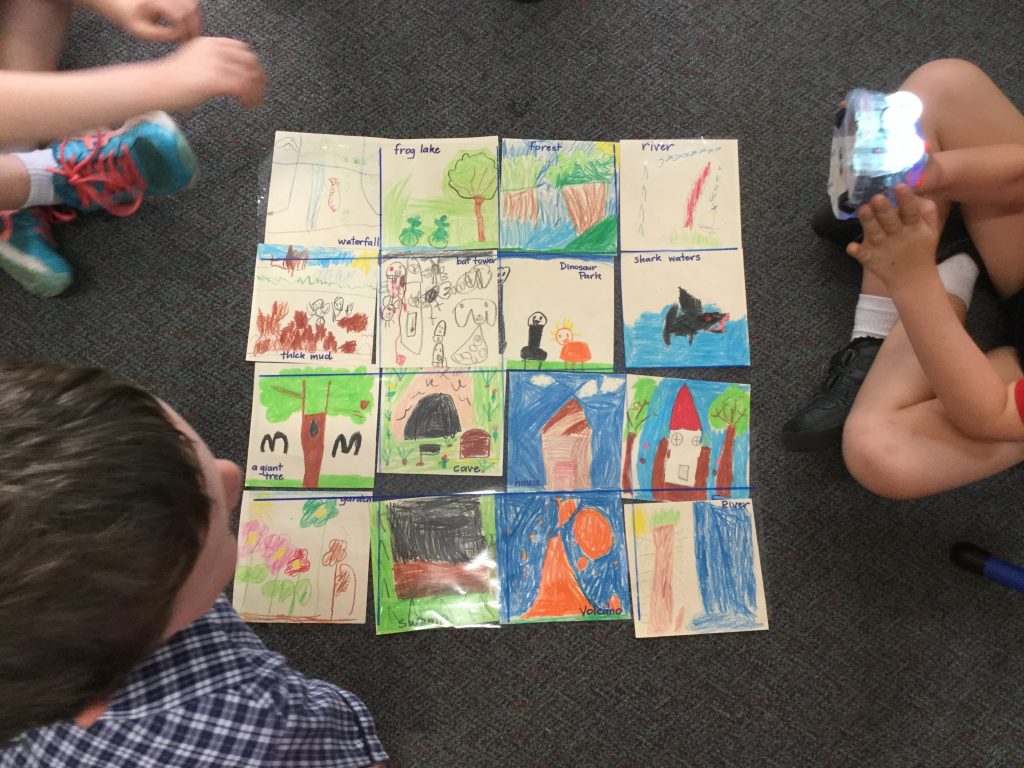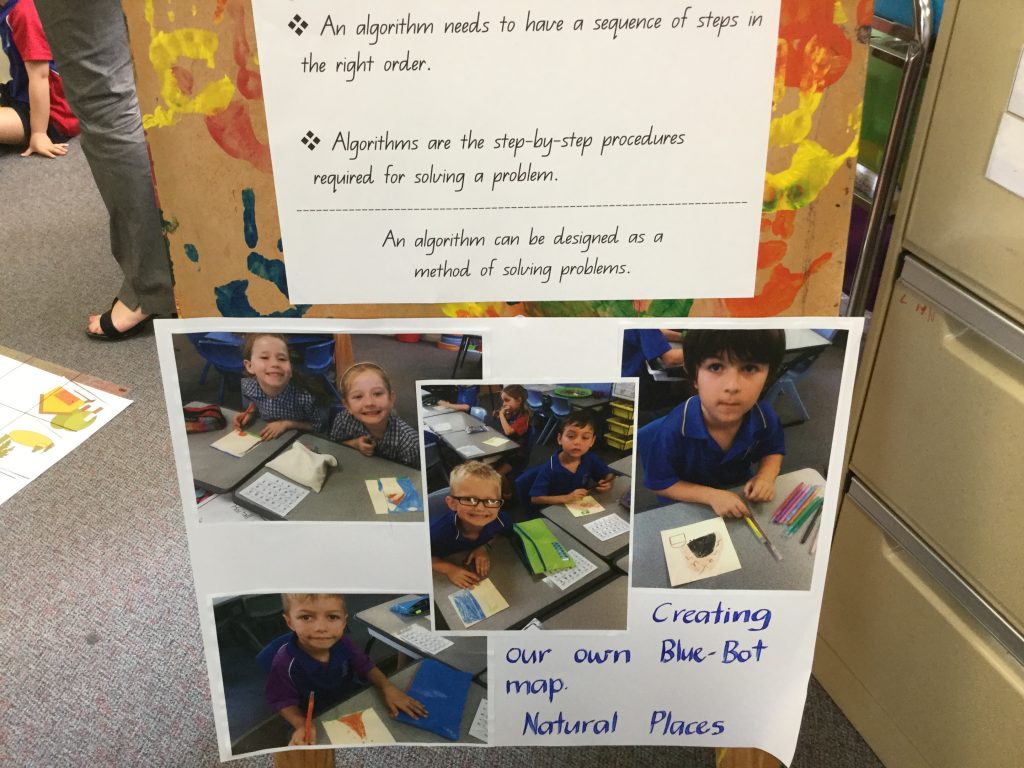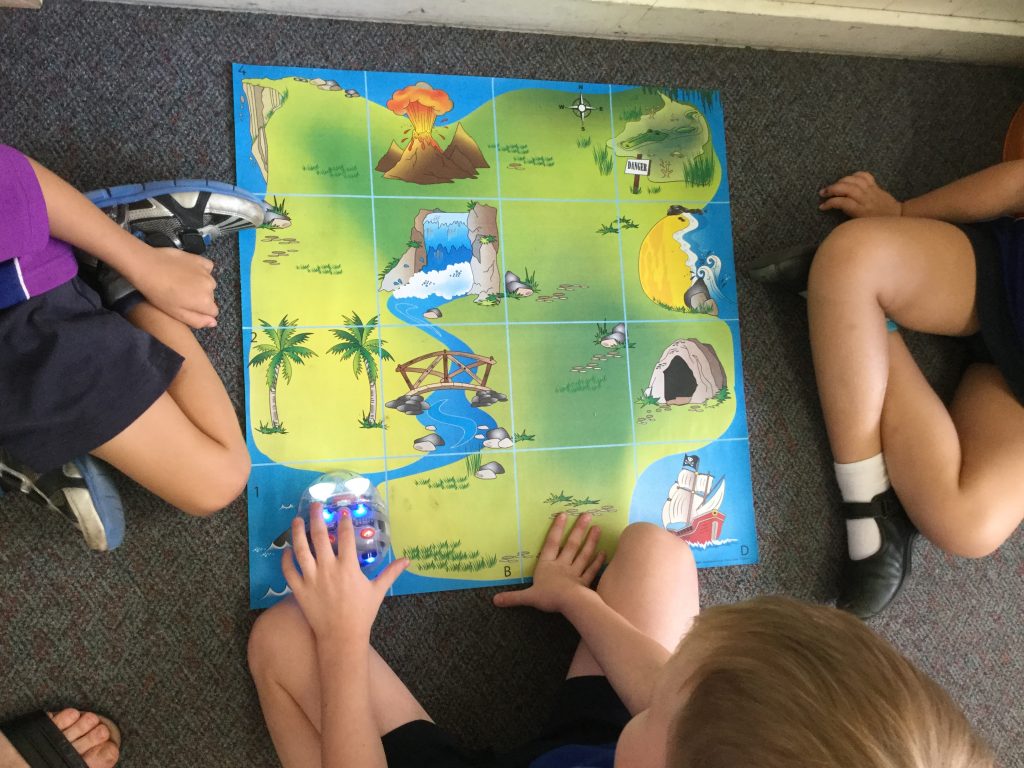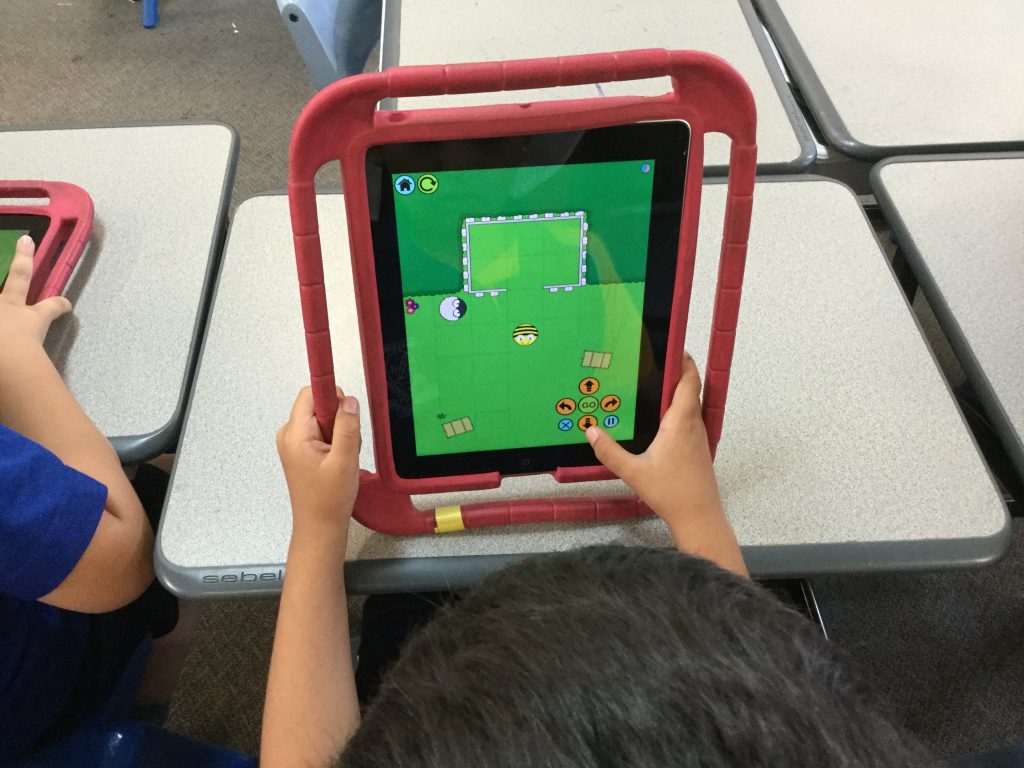Mrs Fisher, in Yr 1, is doing some fantastic work with linking Location and Direction in Mathematics to the Digital Technologies Curriculum. The band description for F-2 in this curriculum reads:
Foundation to Year 2 Band Description
Learning in Digital Technologies builds on concepts, skills and processes developed in the Early Years Learning Framework. It focuses on developing foundational skills in computational thinking and an awareness of personal experiences using digital systems.
By the end of Year 2, students will have had opportunities to create a range of digital solutions through guided play and integrated learning, such as using robotic toys to navigate a map or recording science data with software applications.
In Foundation – Year 2, students begin to learn about common digital systems and patterns that exist within data they collect. Students organise, manipulate and present this data, including numerical, categorical, text, image, audio and video data, in creative ways to create meaning.
Students use the concept of abstraction when defining problems, to identify the most important information, such as the significant steps involved in making a sandwich. They begin to develop their design skills by conceptualising algorithms as a sequence of steps for carrying out instructions, such as identifying steps in a process or controlling robotic devices.
Upon visiting last week, during a time designated for a rotational learning situation, there were a number of activities running and these included the students working independently as a group in a couple of cases. Key terminology, given out to teachers early this term was displayed around the room including the words “algorithm”, “robotic device” and “debug”. The students had also worked together to create a poster demonstrating their understandings of what an algorithm was.
The class had made their own beebot map which used images they had drawn together in a Geography lesson when they had been looking at natural features. These images were under a transparent plastic grid, allowing them to direct their bluebots to different locations:
There was another group working with Mrs Fisher on a unplugged activity involving the movement of a block to certain points on the grid, avoiding obstacles. What was fantastic about this activity was the guided learning that was occurring and the use of the arrow commands with the accompanying text.
One group, working independently, was using the text ‘Rosie’s Walk’. This was being read by one child aloud whilst events in the story were displayed under another transparent grid. When particular events had been read, the other students – in the role of Rosie and the fox – would program their blue bots to get to these locations.
Another group, working with a teacher aide, were programming their beebot to get to particular locations on their island map.
A final group were using their beebot iPad app in an independent group. They happily demonstrated to me what they were doing and the way they were moving through increasingly more demanding activities.
The busy ‘hum’ in the room was something that was commented on by a visitor with me at the time. There were multiple activities occurring – some with an adult and some not and every one of the children was focussed on the activity in front of them. The engagement was clear but also the benefits:
- using computational thinking to break down a task and then to approach it methodically and logically
- the opportunity to use the language of direction and location
- the opportunity to use the language of computational thinking like ‘debug’ and algorithm’
- the opportunity to reinforce some concepts from other curriculum areas including English and Geography.
- the opportunity to differentiate learning for students by giving them a range of experiences through the different activities.
Hear from Mrs Fisher at our upcoming ‘DigiTech by Design’ Conference on 1 June. Bookings open soon.







